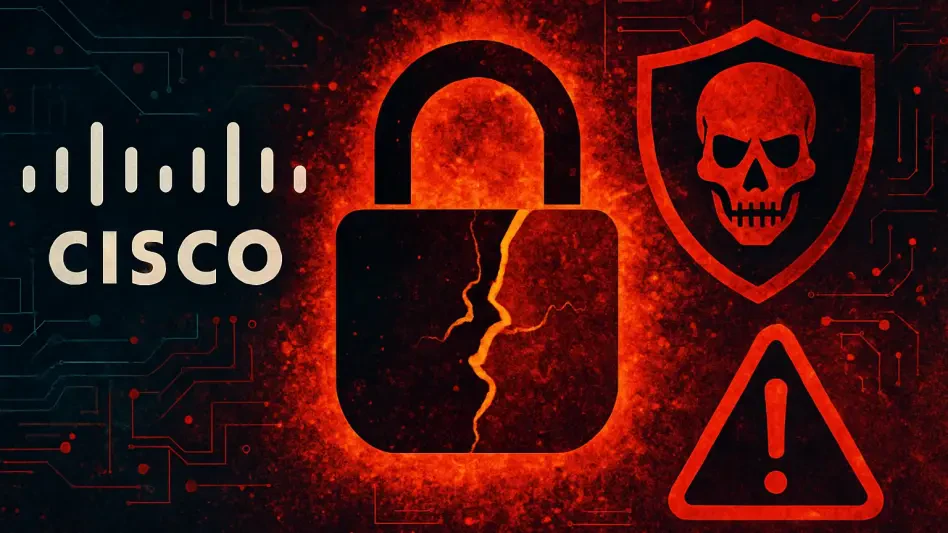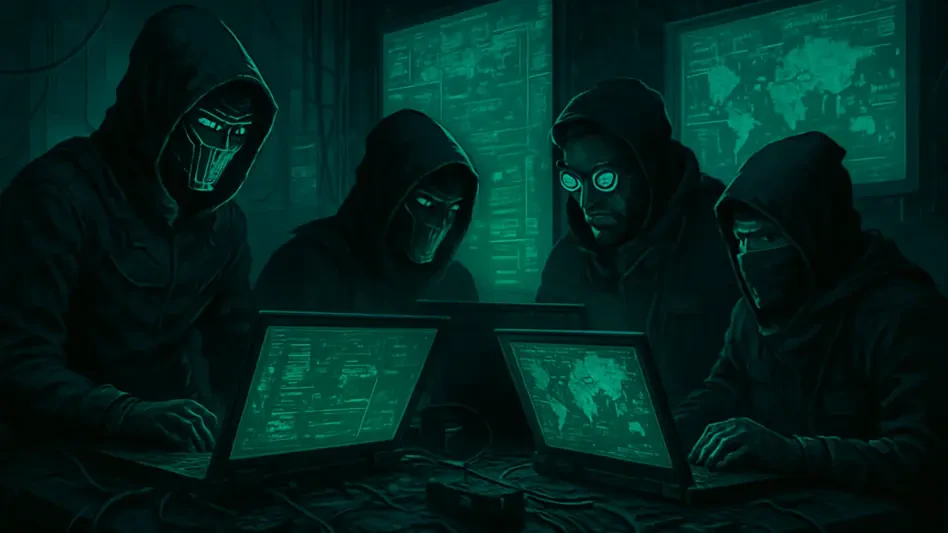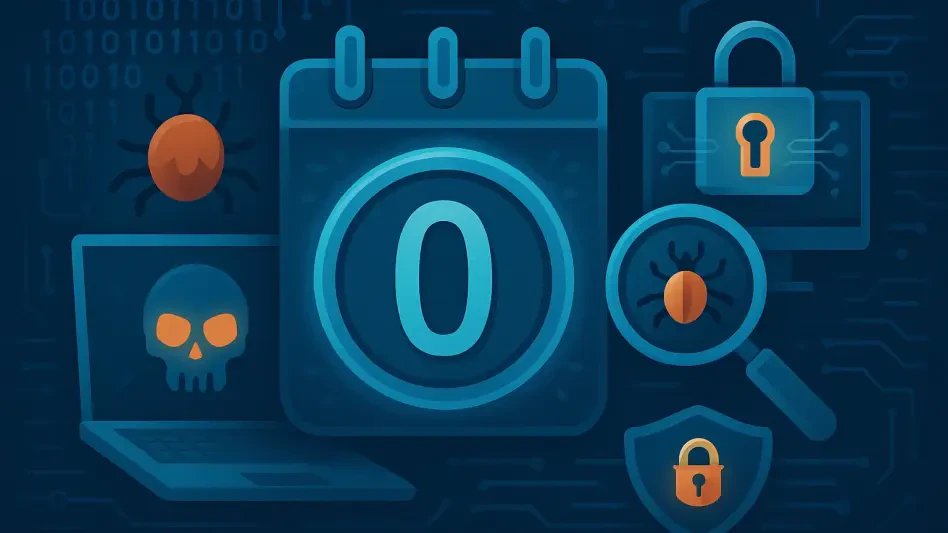The cybersecurity landscape continues to evolve rapidly, with significant developments and incidents occurring across various sectors. This article delves into the latest updates, highlighting critical patches, nation-state activities, and key events that underscore the dynamic nature of modern cyber warfare and defense.
Ivanti Patches Actively Exploited Zero-Day Vulnerability
Discovery and Immediate Response
Ivanti has responded swiftly to a critical remote code execution vulnerability in its Connect Secure product that has been identified as CVE-2025-0282. This zero-day vulnerability has been prominently exploited, affecting Policy Secure and Neurons for ZTA gateways, with exploitation observed particularly in Connect Secure. Given the severity, security firm Rapid7 has stressed the importance of applying these patches immediately rather than waiting for a routine patch cycle. The urgency comes partly from the vulnerability’s potential to cause significant disruptions if left unpatched, emphasizing a priority update for all affected users.
The discovery of this vulnerability was made through Ivanti’s Integrity Checker Tool (ICT), which acted as a cornerstone in unveiling and understanding the flaw. Once discovered, Ivanti collaborated with notable cybersecurity entities, Google’s Mandiant, and Microsoft’s Threat Intelligence Center to investigate further. According to Charles Carmakal, Mandiant’s Chief Technology Officer, a China-linked threat actor has already exploited this loophole, deploying malware from the UNC5221 group since at least mid-December 2024. The attackers employed sophisticated malware types, including SPAWNANT installer, SPAWNMOLE tunneler, and SPAWNSNAIL SSH backdoor, indicating a sophisticated level of threat. This situation underscores the need for heightened vigilance and immediate patching protocols to thwart such advanced persistent threats.
Collaboration and Threat Actor Identification
Following the initial discovery, the collaborative efforts between Ivanti, Google’s Mandiant, and Microsoft’s Threat Intelligence Center proved indispensable in dissecting the vulnerability’s extent and potential threat horizon. The ingenuity of the China-linked threat actor UNC5221 came to light as they skillfully exploited this flaw using a variety of advanced malware tools. Among these, SPAWNANT installer, SPAWNMOLE tunneler, and SPAWNSNAIL SSH backdoor were notably sophisticated, capable of systematic disruption and stealthy infiltration within compromised networks. Additional discoveries by Mandiant revealed new malware families such as DRYHOOK and PHASEJAM, though these families have yet to be conclusively attributed to any known threat groups.
The involvement of such advanced malware and the potential for further exploitations highlights the ongoing challenges faced by cybersecurity professionals. This scenario also reinforces the urgency for defenders and IT administrators to anticipate opportunistic exploitations targeting credentials and future web shell access. The collective response and updated security measures are imperative to mitigate the risks posed by these sophisticated adversaries, thus reinforcing the critical necessity for timely patch implementations.
US Supreme Court Hears Arguments on TikTok Ban
Legal and Political Context
In a significant development, the US Supreme Court has commenced hearings on a controversial law that might lead to a TikTok ban in the United States. Set to take effect on January 19th, this law mandates the sale of TikTok’s US operations by its Chinese proprietor, ByteDance, citing national security concerns tied to Chinese ownership. This law has garnered robust bipartisan support in Congress and endorsement from President Biden, emphasizing the perceived threats to national security. However, TikTok and its proponents argue that such measures contravene First Amendment rights by aiming to restrict the platform’s operations based on ownership concerns.
As debates rage on, President-elect Trump has advocated for delaying the law’s implementation to allow time for exploring political resolutions. Despite these efforts, the judicial outcome of this case is steeped in uncertainty, making it a focal point of current cybersecurity discourse. Should the prohibition stand, new downloads and updates of TikTok would be barred from American app stores, significantly impacting the app’s considerable user base and operational dynamics within the US. The resolution of this case could set a noteworthy precedent regarding the interplay between national security and digital rights.
Potential Implications and Judicial Uncertainty
The unfolding legal battle over TikTok carries substantial implications not only for the app’s extensive user base but also for the broader digital ecosystem and international business relations. The judicial outcome, while unpredictable, could influence similar cases involving foreign-owned digital platforms perceived as potential security threats. This scenario has prompted a heightened level of scrutiny and strategic planning within tech companies that could face similar legal challenges in the future. Moreover, the ongoing debate surrounding the TikTok ban highlights the tension between governmental national security protocols and corporate operations in an interconnected world.
If the ban is upheld, TikTok’s operations would face considerable hurdles, from stymied user growth to potential revenue declines given the app’s vast American audience. Contrarily, should the courts find the ban in violation of constitutional rights, it could embolden other foreign-owned digital platforms to challenge similar regulatory actions, potentially reshaping the digital regulatory landscape. The current judicial ambiguity underscores the intricate balance between safeguarding national security and preserving digital freedoms, a balance that remains pivotal in the evolution of cyber policies and legislation.
Mirai Botnet Variant Exploits Router Zero-Days
Emergence and Exploitation
The cybersecurity community has observed a new variant of the infamous Mirai botnet actively exploiting zero-day vulnerabilities found in various industrial routers and smart home devices. Chinese security researchers based at Qi’anxin XLab began tracking this variant’s operations in early 2024, with a marked shift to exploiting zero-days noted by November of the same year. This variant has targeted over 20 vulnerabilities, affecting key devices such as Four-Faith industrial routers, Neterbit routers, and Vimar smart home systems. These targeted vulnerabilities point to the adaptive strategies employed by botnet operators to infiltrate and use a diverse array of connected devices for malicious purposes.
The botnet’s scalability remains considerable, with current operations involving approximately 15,000 active IPs. This network facilitates numerous distributed denial-of-service (DDoS) attacks, showcasing the botnet’s potential to cause widespread disruptions. The emergence of this Mirai botnet variant reinforces the persisting threat posed by botnets in the digital ecosystem, particularly given their increasing sophistication and persistence. As these botnets continue to evolve, they present ongoing challenges for cybersecurity professionals striving to safeguard digital infrastructures proactively.
Scale and Impact
The scale at which this Mirai botnet variant operates highlights alarming trends within the cybersecurity landscape. The ability to mobilize around 15,000 active IPs showcases not only the expansive network this botnet controls but also underscores its significant potential for orchestrating large-scale distributed-denial-of-service (DDoS) attacks. Such attacks, leveraging vulnerabilities across varied devices from industrial routers to smart home gadgets, signal a notable escalation in the strategic sophistication of cyber threat actors. For infrastructure managers and security professionals, this development outlines the critical importance of routine vulnerability assessments and prompt application of security patches.
Moreover, the impacts of the botnet’s activities can ripple across different sectors, affecting both industrial operations and residential systems reliant on the compromised devices. The relentless nature of the Mirai botnet variant poses a continuous threat as it capitalizes on zero-day vulnerabilities to infiltrate and control multiple devices. This scenario necessitates a multifaceted defensive approach combining real-time threat monitoring, enhanced incident response protocols, and collaborative efforts across cybersecurity entities to mitigate evolving risks effectively.
UN Confirms Aviation Agency Hack
Breach Details and Data Compromise
In a concerning revelation, the United Nations’ International Civil Aviation Organization (ICAO) has confirmed that it suffered a significant data breach resulting in the theft of approximately 42,000 recruitment records. The hacker, identified by the alias “Natohub,” publicized the stolen data on BreachForums, highlighting the breach’s extent. The compromised data extends over a span of several years, from April 2016 to July 2024, and includes personal details such as names, dates of birth, addresses, phone numbers, email addresses, and educational and employment histories of applicants. This extensive data repository’s exposure brings to light the perennial risks of cybersecurity breaches impacting global and high-profile organizations.
Despite the significant compromise, ICAO has reassured that the breach’s effects are confined strictly to the recruitment database, with no detected impacts on aviation safety or security operations. This communication aims to assure stakeholders that the core functions governing aviation standards and regulations remain uncompromised. However, the long-term nature and breadth of the data breach underscore the substantial challenges organizations face in protecting sensitive information against increasingly sophisticated cyber adversaries.
Impact and Assurance
The breach’s fallout stresses the critical need for continuous vigilance and robust security measures within international organizations handling sensitive data. The exposure of around 42,000 detailed recruitment records represents a significant privacy and security concern for the individuals affected, with potential ramifications including identity theft and unauthorized use of personal information. The long period over which this data was collected and subsequently exposed highlights inherent vulnerabilities within organizational data management practices and the evolving sophistication of cybercriminal tactics.
In response to the breach, the United Nations’ International Civil Aviation Organization (ICAO) has aimed to fortify its cybersecurity frameworks, ensuring such compromises do not extend beyond isolated data segments. The breach’s isolation to the recruitment database may mitigate immediate operational disruptions, but it serves as a crucial lesson in the necessity of advanced and proactive cybersecurity measures. For stakeholders and global entities, this incident underscores the vital importance of maintaining stringent cybersecurity protocols and emphasizes ongoing adaptation to counteract emerging cyber threats tailored to high-profile organizations.
Japan Attributes Over 200 Cyberattacks to China
Attribution and Targets
Japan’s National Police Agency (NPA) made a compelling revelation by linking over 200 cyberattacks to a Chinese threat group known as MirrorFace over the past five years. These cyberattacks targeted a wide range of Japanese entities, from prominent institutions like the Japan Aerospace Exploration Agency (JAXA) and crucial government organs such as the Foreign and Defense ministries to various private companies, think tanks, politicians, and journalists. The tactics employed by MirrorFace typically involved leveraging phishing emails embedded with malware or exploiting vulnerabilities in VPN systems, enabling them to infiltrate these targets effectively and discreetly.
The concerted efforts behind these intrusions are speculated to revolve primarily around intelligence theft, particularly focusing on national security information and advanced technological data. This pronounced cyber espionage campaign underscores the threats posed by nation-state actors and highlights their capabilities in executing large-scale, prolonged cyber-intrusion strategies. For its part, Japan’s National Police Agency continues to investigate and bolster its cyber defenses against such sophisticated intrusion methods.
Objectives and Implications
The strategic objectives behind these cyber intrusions executed by the MirrorFace group appear to be intricately tied to intelligence gathering and technological espionage. With an apparent focus on sectors of high strategic value such as national security and advanced technologies, the attacks seek to undermine Japan’s competitive and defense advantages. The breadth of the targets reflects a meticulously planned espionage campaign aimed at exploiting vulnerabilities within varied sectors, underscoring the persistent and multi-faceted approaches employed by nation-state actors in modern cyber warfare.
This attribution to MirrorFace by Japan’s NPA not only reiterates the ongoing cyber espionage activities driven by nation-states but also emphasizes the critical need for robust cybersecurity infrastructure. For Japanese entities, these revelations advocate for heightened alertness and proactive measures, such as improved phishing detection and more secure VPN configurations, to protect against such sophisticated threats. In the broader realm of cybersecurity, these findings further stress the importance of international cooperation and intelligence sharing to collectively mitigate the risks posed by persistent nation-state cyber actors.
Volt Typhoon’s Activity in Guam
Attack Details and Targets
A detailed report from Bloomberg has unveiled a major cyberattack in 2022 by the Chinese APT group known as Volt Typhoon, specifically targeting Guam’s Power Authority (GPA), the primary power utility serving the US island territory. This cyberattack involved deploying unique and advanced malware strains to infiltrate and compromise multiple entities within Guam. The group managed to gain access to sensitive networks, including those related to defense, which typically reflects well-fortified security measures. The strategic selection of Guam as a target likely stems from its critical role in supporting US military activities, underscoring the intersection of civilian infrastructure and military operations in the focus of such nation-state attacks.
This infiltration stands as a significant reminder of the vulnerabilities within pivotal infrastructure that can be exploited during geopolitical tensions. The deployment of specialized malware aimed at integrating deeply within the targeted networks indicates an extensive and precise preparation, emphasizing the level of sophistication attained by threat actors like Volt Typhoon. Such incidents call for comprehensive measures to bolster infrastructure defenses and the seamless integration of cyber and physical security strategies to effectively counteract these persistent threats.
Strategic Implications
The cybersecurity landscape is rapidly evolving, with significant updates and incidents happening across various sectors. This continues to shape our understanding of modern cyber threats and defense mechanisms. From critical patches that address vulnerabilities to nation-state cyber activities, the field is constantly adapting to address new challenges.
Recent developments highlight the importance of staying vigilant against cyber threats. For instance, critical security patches are regularly released to fix vulnerabilities in software and systems that could be exploited by malicious actors. These updates are crucial to maintaining the integrity and security of data and infrastructure.
Additionally, nation-state activities in cyberspace are on the rise, with countries engaging in cyber espionage, intellectual property theft, and even direct attacks on critical infrastructure. These actions underscore the strategic importance of cybersecurity in national defense and global stability.
Key events in the cybersecurity realm also show the dynamic nature of this field. From high-profile breaches to sophisticated ransomware attacks, organizations must continually evolve their cybersecurity strategies to defend against these threats.
Overall, the current state of cybersecurity highlights the need for constant vigilance, timely updates, and comprehensive defense strategies to protect against an ever-changing array of cyber threats. The dynamic nature of cyber warfare and defense underscores the importance of staying informed and proactive in this critical area.







